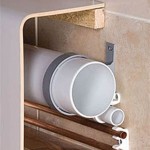Do I Need Building Regulations For A New Bathroom?
When carrying out a bathroom refurbishment, it is essential to be aware of the need for proper compliance with building regulations. Failure to comply can have serious consequences, both in terms of safety and financial penalties. This article will provide a comprehensive guide to help you determine whether building regulations are applicable to your bathroom renovation and what steps you need to take to ensure compliance.
What are Building Regulations?
Building regulations are a set of rules that have been established to ensure the safety and habitability of buildings. They cover a wide range of aspects such as structural integrity, fire safety, energy efficiency, and accessibility. Compliance with building regulations is mandatory for all new buildings and major renovations, including bathroom renovations.
Do I Need Building Regulations For A New Bathroom?
Whether or not building regulations apply to your bathroom renovation depends on the extent of the work being carried out. Minor changes, such as replacing fixtures and fittings, generally do not require building regulation approval. However, more significant renovations, such as altering the layout of the bathroom, installing a new shower or bath, or changing the electrical or plumbing systems, will require compliance with building regulations.
What Happens if I Ignore Building Regulations?
Ignoring building regulations can have serious consequences. The local authority may issue an enforcement notice, requiring you to make the necessary changes to achieve compliance. This can involve costly alterations or even the removal of unauthorized works. Additionally, your insurance policy may be invalidated if the work is not carried out in accordance with building regulations, leaving you financially vulnerable in the event of an incident.
How to Comply with Building Regulations
To ensure compliance with building regulations, it is advisable to follow these steps:
- Check with the Local Authority: Contact your local authority's building control department to determine the specific regulations that apply to your bathroom renovation.
- Hire a Qualified Contractor: Employ the services of a qualified contractor who is familiar with the relevant building regulations and can ensure that the work is carried out to the required standards.
- Submit a Building Notice: In most cases, you will need to submit a building notice to the local authority before starting work. This provides the authority with details of the proposed work, allowing them to assess whether it complies with building regulations.
- Arrange for Inspections: During the course of the work, the local authority may carry out inspections to ensure that the regulations are being met. Cooperate fully with any inspections and address any issues raised promptly.
- Obtain a Completion Certificate: Upon completion of the work, the contractor should provide you with a completion certificate, which confirms that the work has been carried out in accordance with building regulations.
Conclusion
By understanding the importance of building regulations and taking the necessary steps to comply, you can ensure that your bathroom renovation is safe, legal, and financially secure. Remember, seeking professional advice and hiring qualified contractors are key to a successful and compliant bathroom refurbishment.

Can A Downstairs Toilet Be Removed From Home Labc
Minimum Size For A Downstairs Toilet Bathroom Guru

Building Regulations And Bathroom Fittings Homematas

Everything You Need To Know About Downstairs Toilet Building Regulations In The

Bathroom Building Regulations In The Knowledge Hub Fast Build Supplies

Designing And Building Your Homes To Be More Accessible Part Two

Learn Rules For Bathroom Design And Code Fix Com

Everything You Need To Know About Downstairs Toilet Building Regulations In The

Bathroom Building Regulations Guide Advice Top Tradespeople

What Building Regulations Apply To Drainage In The Bathroom Front Door
Related Posts







